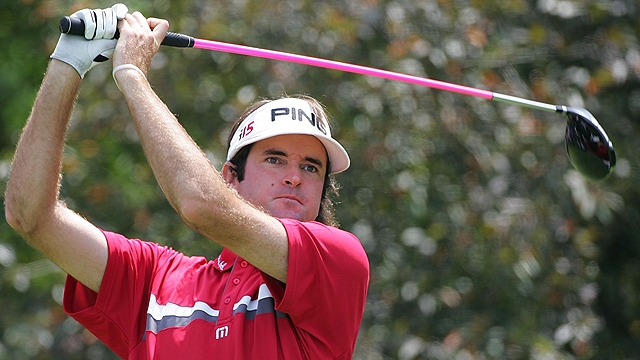NEWS
A Lesson Learned: Distance control on your putts from The Travelers Championship

First of all, congratulations to Bubba Watson, a well-deserving champion and classy champion here at this year's Travelers Championship! As always, it's a thrill to be a part of what we here at TPC River Highlands feel is one of the best events in golf (no bias here!). But I think this year, with the drama and the three-man playoff, we have a pretty good case for sure.
One of the things that struck me about Bubba Watson's play this week was his precise distance control. We have generous fairways and large greens here at TPC River Highlands, and everyone knows that Bubba can hit it a mile, but distance doesn't always translate into low scores. In order to take advantage, a player must position himself (or herself) in the right areas of the large greens to have the best chance of 1.) making the putt or 2.) avoiding the dreaded three-putt. Obviously, the fact that Watson and Corey Pavin were both in the playoff should indicate that it's not about distance as much as distance control at this level.
Watson did an absolutely tremendous job of that all week, hence the -14 score and the champion's trophy. But for this week's A Lesson Learned, I want to focus on the already-mentioned large greens here at TPC River Highlands and the reality that most amateur players don't have the same distance control as the great PGA Tour players we saw this past week. It'd be nice if we could all dial our distances down to the exact yardage, but the truth is, many amateur players are just hoping for solid contact and to put their shot anywhere on the green.
Let's face it, if we could all put our shots exactly where we wanted, we'd all be out on Tour. So with that being said, the ability to control your speed on long putts will often be as critical to your score as controlling the distance on your irons. If you come visit us at TPC River Highlands, or no matter where you play golf, you're probably going to have your share of long putts. I try to instill in my students three keys to being a better putter on these longer putts.
1.) Take a practice stroke that mirrors the actual stroke you'll be making on the ball. Too often I see amateur players take long fluid practice putts and then jab at the ball when it counts as if they are afraid of hurting it. Or, conversely, they take quick short practice strokes before they step up to hit a fifty foot putt. You've done yourself no favors by doing either of these pre-shot methods.
2.) Look at the hole during your practice stroke. Visualize the entire roll of the ball, from the stroke all the way to the hole. This will get you a sense of the break, the speed and the timing that you'll need to put the best putt possible on your ball.
3.) Keep a steady head and steady lower body throughout the stroke. Excess movement can wreck any shot you take in golf, especially a putt. And having your timing amiss during a long putt can result in a much more difficult second putt than you really want for par. So from this week's Travelers Championship and PGA.com's A Lesson Learned, let's acknowledge that golf at the PGA Tour level is tough. And any time you play golf, you're going to have some long putts where you really want to avoid three putting if at all possible. If you work on controlling the distance on these putts, you're going to score better no matter what level of golf you play.
Suzy Whaley is a PGA Instructor at TPC River Highlands in Cromwell, Conn. Suzy is one of the most recognized women in golf, having been a player on the LPGA Tour, a spokeswoman for American Express' Women's Golf Month, a t.v. analyst and in 2003, was the second woman to ever qualify for a PGA Tour event. Whaley has also been elected to be a Board Member of The PGA of America beginning in 2010. You can learn more about Suzy Whaley at her website: //www.suzywhaleygolf.com
